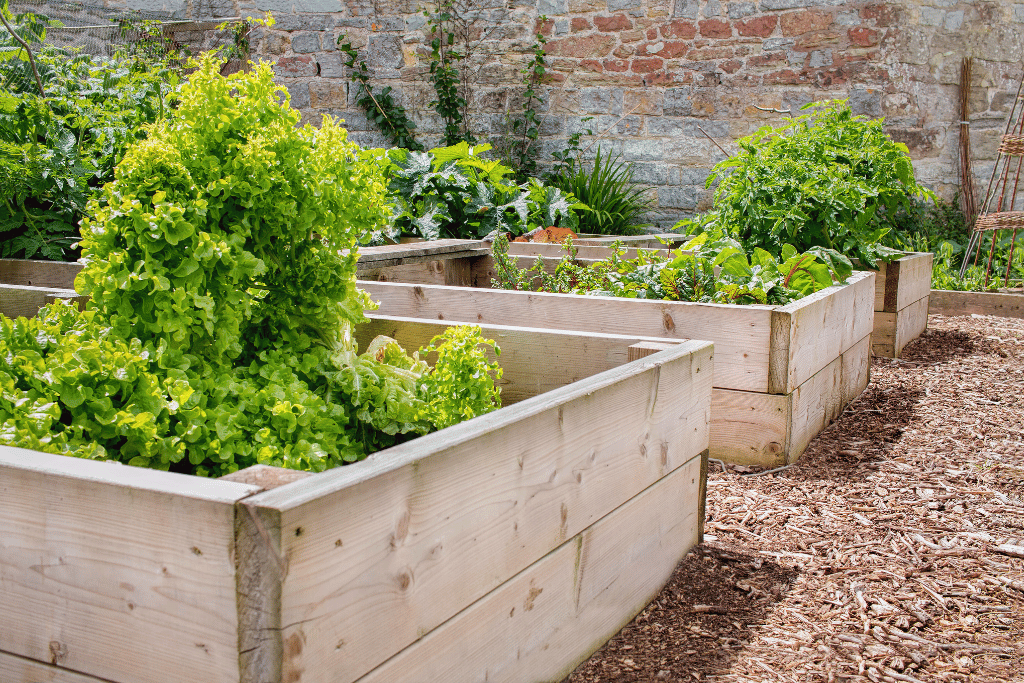Dwarf Alberta spruce bonsai are conifers with showy foliage of dense green needles. They’re an evergreen tree that lives outdoors and can make a lovely bonsai if given the proper care and styling.
Spruce are quite a challenging species to work with for bonsai due to their lack of back budding and tendency to not stay in place when wired. However, with a bit of effort, you can eventually make a great bonsai out of them.
Species such as the Ezo spruce (Japanese), Norway spruce and North American Picea engelmannii are all good species to work with for bonsai, and they are typically widely available in garden centers or nurseries. If you’d like to know more about caring for dwarf Alberta spruce bonsai, then read on below.

Location
Dwarf Alberta spruce bonsai need to be outdoors all year long, like most spruce trees. They must be subjected to a cold period during the winter to induce dormancy; however, they should be protected from particularly harsh frosts.
You can protect them from frost by putting mulch over the soil or by keeping your dwarf Alberta spruce in something such as an unheated cold frame. Your tree should also be protected from any strong wind that could knock it over or dry it out.
While overwintering, don’t forget to water the tree. Even if your bonsai tree is dormant, it still requires watering. Otherwise, it will eventually die. You can check if it needs watering by sticking your finger an inch deep into the soil. If it’s soggy, hold off on watering until it dries out slightly. Overwatering can also be a problem for beginners when taking care of bonsai trees in the winter, as the trees have a lower water demand but will still water like usual.
Dwarf Alberta spruce bonsai should be placed in a location with full sun in the growing season – it’s recommended that most bonsai get around six hours of light per day.
Watering
Dwarf Alberta Spruce will need watering less than other trees; and this is quite similar to other conifers such as junipers and pines. In between watering, I like to mist them as the majority of their energy comes from the foliage. In the growing season, I usually water my conifers once every two days (however this depends on the conditions).
As with all trees, you should never let the soil dry out. If you do this, the tree will die very quickly. You should continually monitor the soil’s moisture, especially in the growing season. If it’s beginning to dry out, thoroughly water it. This is usually done daily in the growing season.
To water my trees, I water the trees thoroughly for ten seconds, leaving them for a minute and then returning and watering them for another ten seconds. This ensures that they have received a good amount of water. However, if it’s a very hot day, then I may water more than once a day or leave some trees sitting in water, such as wisteria.
If it is a very hot day some of the more sensitive trees, which can be burnt easier, should be moved into partial shade. Intense hot sun can damage the leaves.
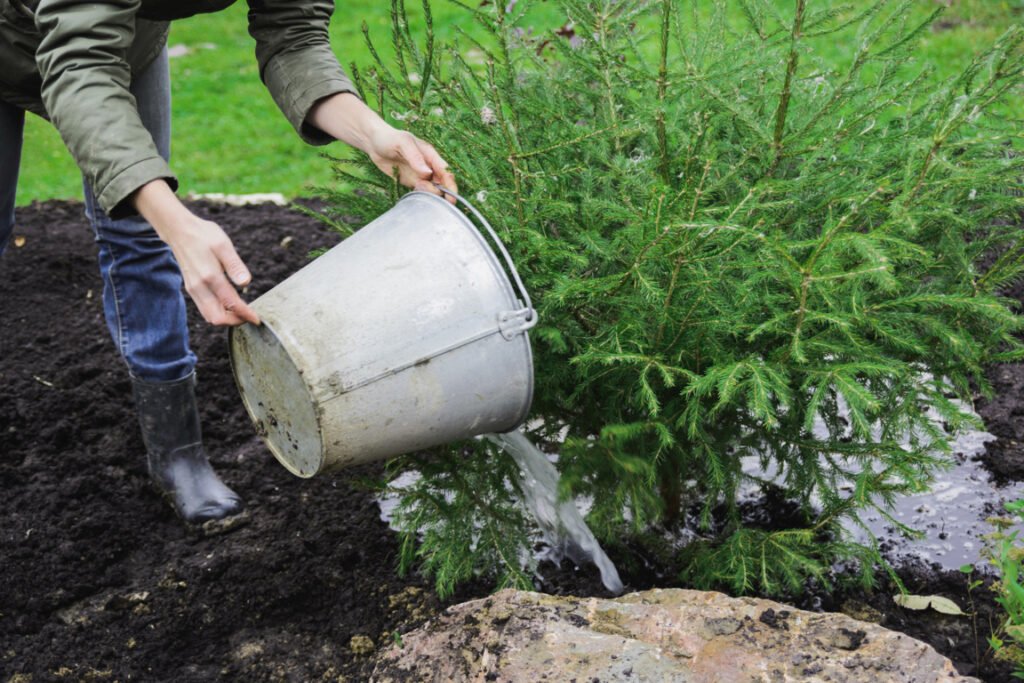
Fertilizing
Fertilizing any bonsai tree is a critical process to ensure they survive and can put on a good amount of growth. Your bonsai tree won’t be able to get nutrients from anywhere else due to it being in a small pot, so you need to fertilize it regularly in the growing season.
With spruce, this should be done every 7-10 days in the growing season with a balanced fertilizer. You can use essentially any fertilizer, but many people opt for brands such as Naruko or Biogold. When buying fertilizer, you should check the NPK (Nitrogen, Phosphorous, Potassium) ratios, ensuring that it’s correct for what you want.
Nitrogen drives growth in the tree, phosphorous helps with the formation of fruit and flower buds, and potassium helps in vital processes such as water transport in the tree. As the growing season comes to an end, you should lower the amount of nitrogen you are using, as this will push out soft growth, which may die from the frost a lot easier.
If you don’t want to fertilize as much, you can use a pellet-based fertilizer instead. Place a pellet of the fertilizer on the top of the soil around every 1-2 months and water it.
Dwarf Alberta spruce will enjoy the fertilizer procedure above, however they can also benefit from leaf feeding. Fertilizers that contain iron and chelates are the best type to use when leaf feeding spruce.
Pruning
Spruce have different growth habits compared to other trees – they have pretty whorled growth, which means this can cause many of their branches to come out of the same point on the tree. This means that you should only keep around one branch per whorl.
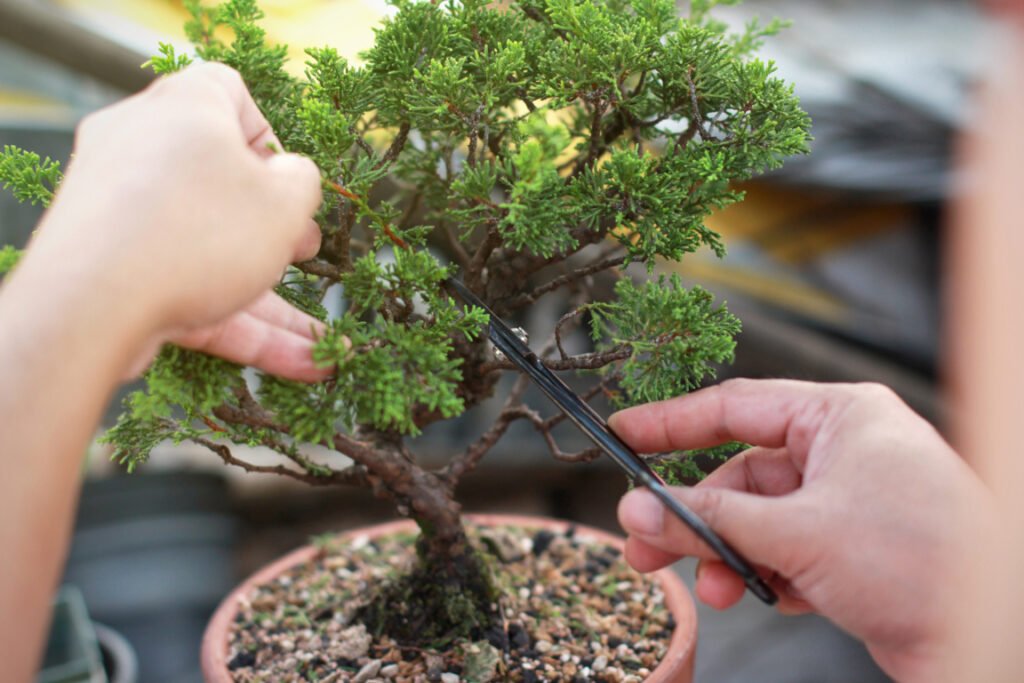
With spruces, you should pinch the shoots in spring when they are soft. You can do this by grabbing the shoot between your thumb and index finger and pulling it. It should snap at its weakest point. Longer branches should be shortened back to small twigs near the trunk.
Due to spruce’s not back budding frequently, you should be careful with what branches you take off. It would be best to leave needles on branches you want to keep. Back budding is where shoots appear on older wood away from active growing areas, this can be good if you are trying to develop a branch in a certain position.
Wiring
Due to the environment spruce usually grow in, spruce’s branches can take years to wire. In their natural habitats, snow builds up on the branches forcing them downwards, which then spring up when the snow melts. Therefore, when wiring, you might need to keep the wire on for years to ensure that the branch stays in position.
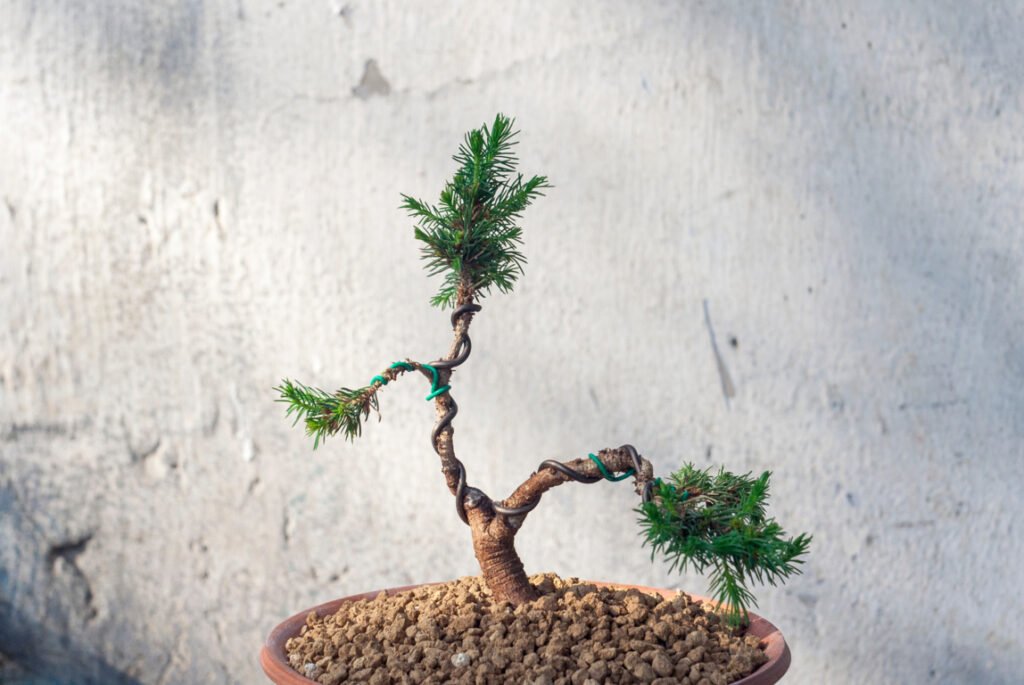
You shouldn’t wire spruce in midsummer. Otherwise, dieback can occur, which can kill off some of your branches or part of your trunk. It’s better to use wire such as annealed copper for spruce, which is much stiffer and better suited for conifers.
Repotting
One of the most crucial stages in bonsai is repotting. It needs to be done every few years. Otherwise, your tree will become unhealthy. The tree will become too rootbound and unable to take in as much water as it previously could, damaging the tree. A good sign of the tree being root bound is the roots circling back on themselves multiple times or roots coming out the bottom of the pot.
It would be best if you repotted spruces in early to mid-spring, which gives them enough time to recover before the growing season starts. When pruning the roots of spruce, you should be careful, as larger trees cannot handle losing large roots.
Spruces can be potted in mixes such as Akadama and pumice, a well-draining combination suitable for many conifers.
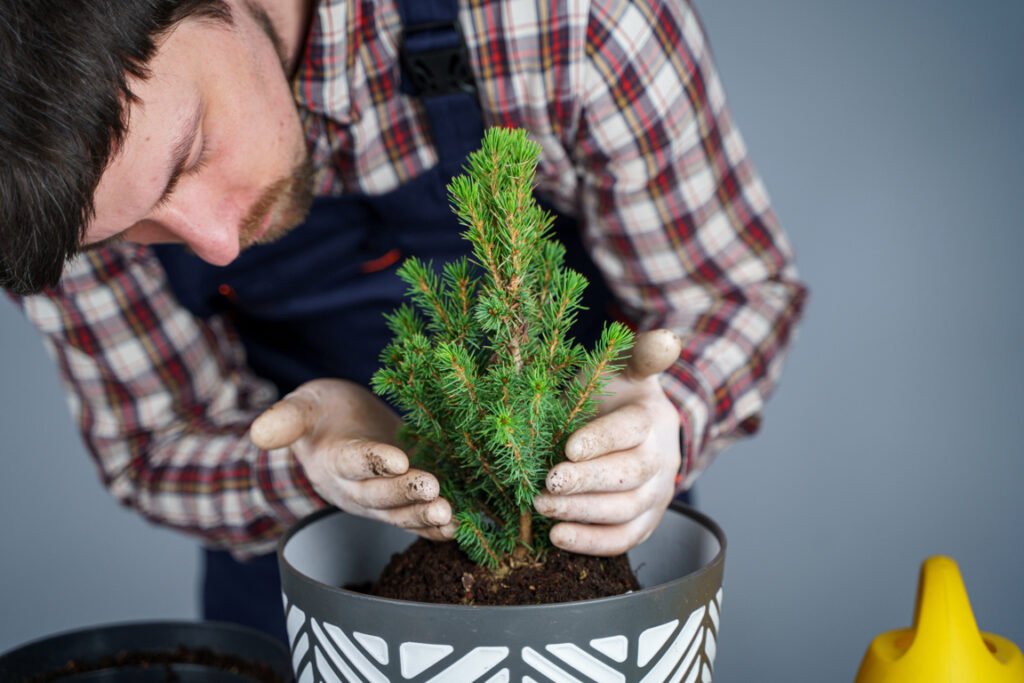
Final Thoughts
Overall, dwarf alberta spruce are quite a difficult species to use in bonsai, however with some knowledge and patience – you can make an excellent tree out of them. To get used to working on spruces, you could try and work on other conifers such as pines or junipers.
Frequently Asked Questions (FAQ)
How do I treat pests on my spruce?
Treating pests on spruces is the same as any other tree. Spray the tree with either a chemical insecticide or an organic insecticide such as neem oil. It would help if you always looked for signs of pests, such as bitten, notched leaves or tiny black insects all over the tree. Getting rid of an infestation early will prevent further problems down the line.
Are dwarf alberta spruce bonsai hardy?
Spruce are one of the hardiest trees you can own. They can tolerate temperatures down to -23C; since they are kept in bonsai pots, they should be given a lot more protection. It’s generally a good rule to give most of your trees protection when the temperatures go below freezing, as this can damage the roots if it happens constantly and affect water movement in the tree.
Can I grow dwarf alberta spruce inside?
No – they are an outdoor tree. If you try to grow them inside, they will likely not get enough light or be exposed to the cold temperatures they need to go dormant in the winter. They will do much better outside, where they can receive a good amount of light.


